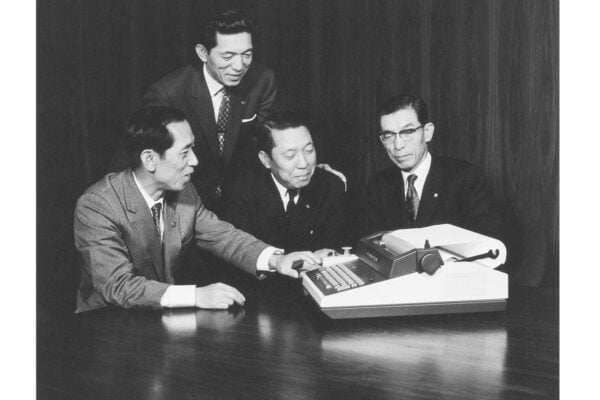Why students should be using calculators from day one in year 7

We’re firm believers in the power of calculators to improve secondary school students’ education here at Casio. We don’t expect you to just take our word for it, however.
It’s those on the frontline of education who can speak from experience about the practical uses of calculators and the impact they can have on learning, both in the classroom and at home.
One such expert is Claire Clay, Lead Practitioner for Maths at Ormiston Academies Trust. She recently told us why she thinks calculators should be used from the very start of secondary education, and made a fundamental part of every maths lesson.
A tool, not a toy
Claire believes the calculator should be a reliable, familiar tool that plays a central role in students’ learning and ways of working. It shouldn’t be a novelty or something that only comes out at set times or in particular lessons.
She argued that the best way to build this familiarity and to get students accustomed to working regularly on calculators is to introduce them as early as possible in year 7.
Most students won’t have much – or any – previous experience with calculators, so this can be a powerful introduction to a new phase in their education.
“From day one it’s a way we can inspire them and start getting them motivated and enthusiastic about maths,” Claire said.
“Some of our students come into year 7 as brilliant mathematicians – they’re already working at greater depth. So how can we motivate and engage them? Show them something new that they haven’t used before.”
A support, not a barrier to learning
A common objection to calculator use in the classroom is that students will become too reliant on the technology and it will become a barrier to learning.
Claire argued that, in many cases, the opposite is true. When they’re not familiar with using a calculator, students can use up so much time and mental effort doing the work manually that they fail to grasp the underlying theory.
When they come across Pythagoras, for instance, students should be thinking about the methodology behind calculating the hypotenuse of a right-angled triangle. They shouldn’t be worrying about using column methods to do tricky multiplications of the values given in a question, when a calculator can do that job for them in seconds.
“As teachers, we’re professionals and we know it’s important to build that fundamental understanding of key topics – solving simultaneous equations, for example,” Claire said.
“But, as students progress through their secondary education, it’s all about understanding and applying their solutions, not just doing the calculations required to get those solutions.”
Preparation for exams
The further students advance in their secondary education, the more important it becomes for them to be comfortable using a calculator.
As they approach their GCSE maths exams – bearing in mind that all but one of the GCSE papers and all A-level maths papers permit calculator use – there are huge advantages to be gained from knowing how to use a calculator properly.
The ability to work with greater speed and efficiency is a key factor, but there is also a big mental benefit for students who know they have a way to check their calculations and avoid any simple mistakes.
When it comes to preparing students to use their calculators properly in an exam, Claire highlighted the value of taking a consistent approach that offers plenty of opportunities to learn the device’s main features and capabilities.
This could be incorporated into the basic structure of every lesson, perhaps as part of a ‘do now’ question at the start.
“I would be using banks of calculator questions that use those key functions and skills – focusing on things like products of prime factors, for example,” she said.
Claire also recommended posing questions to students that test their knowledge of basic processes, such as:
- Where is the cube root key?
- Do you know how to simplify a fraction?
- Can you change a fraction to a decimal or percentage using the format key?
“I would be constantly repeating these and other key skills in ‘do now’ questions. There’s no need to rely on non-calculator questions, as there are more and more banks of resources out there that test using the calculator for all sorts of things,” Claire said.
A range of calculator options
As for the question of which calculators are best-suited to particular years and key stages, this is something every school will have to consider carefully, taking its own unique goals and student needs into account.
The fx-83GT CW and fx-85GT CW – our entry-level scientific calculators – are well-suited to key stage 3 and offer features such as highest common factors, lowest common multiples and inequalities on a number line.
As students progress in their secondary education and start to explore topics in greater depth ahead of their GCSE exams, they could benefit from the more advanced functionality of the fx-991CW, such as the ability to solve simultaneous and quadratic equations.
All of the models across our ClassWiz range have recently received an upgrade, gaining features including a new layout with rounded keys and an intuitive menu structure to navigate the device. If you would like to discuss your school’s technology needs and what calculator would be the best fit for your student



